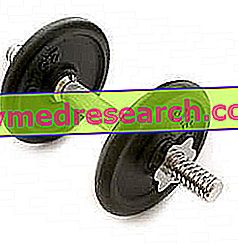
The total artificial heart is a mechanical device, designed to replace an individual's true heart when he suffers from late-stage heart failure .
Consisting of two ventricles of synthetic material, the total artificial heart is first implanted in place of the two "original" cardiac ventricles, after which it is joined to the atria and finally connected to the incoming and outgoing blood vessels.
To keep it running is a battery, which can be, depending on the model of the device used, internal or external.
The artificial heart can be a temporary solution - waiting for a compatible human heart - but also a permanent one - this occurs, for example, when heart transplantation is a contraindicated intervention.
DIFFERENT DEVICES BUT WITH SIMILAR FUNCTIONS
The total artificial heart should not be confused either with the ventricular assist device ( VAD ) or with the heart-lung machine for extracorporeal circulation ( CEC ).
The ventricular assist device is an implantable thoracic pump that supports or replaces the action of the left ventricle of the heart, pushing blood toward the aorta.
It is a temporary remedy, waiting for a "new" heart to be transplanted.
The heart-lung machine for CEC, on the other hand, is a special tool that is used only during the most invasive cardiac surgery, to effectively replace the heart and lungs of the operated patient. In fact, it is made in such a way as to receive the afferent and efferent vessels of the cardiac organ and is capable of oxygenating the blood and distributing it to the various organs and tissues of the body.Its use is essential if the operating doctor wants to intervene on the heart without the "disturbance" of the blood circulating in the cardiac cavities.



